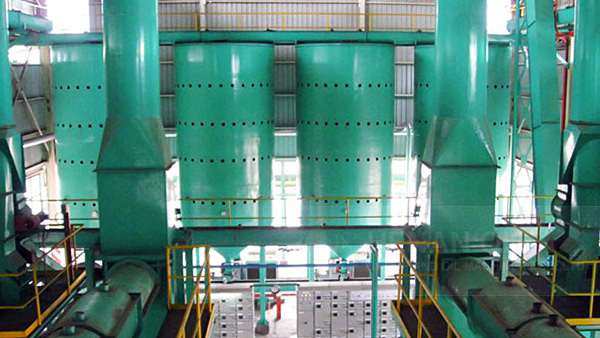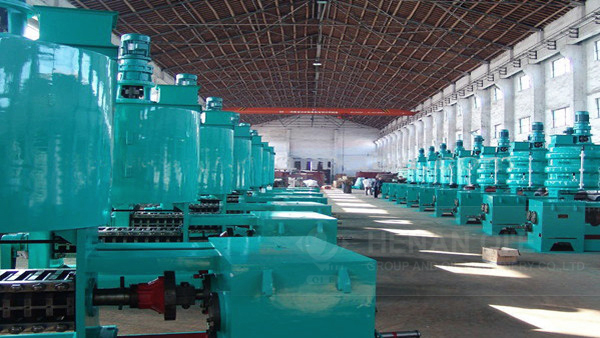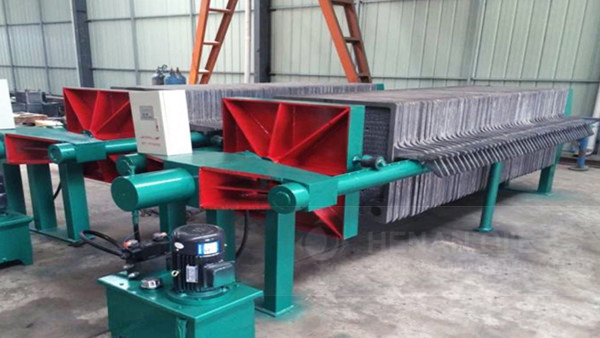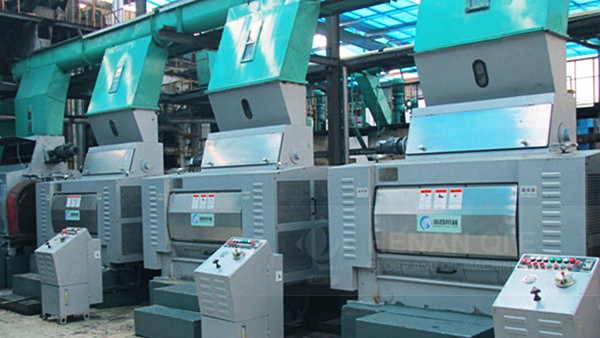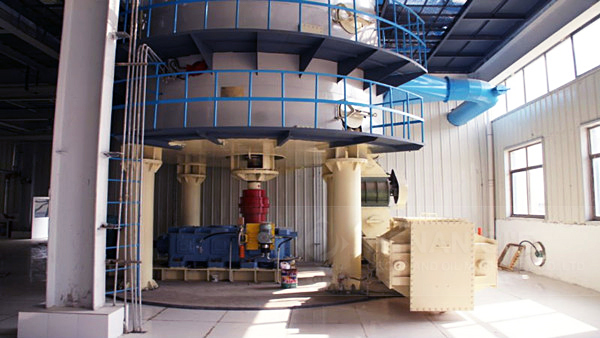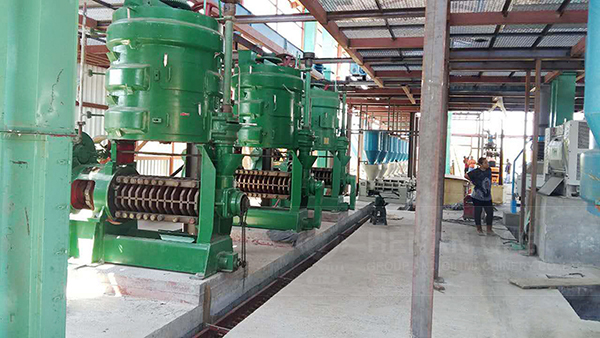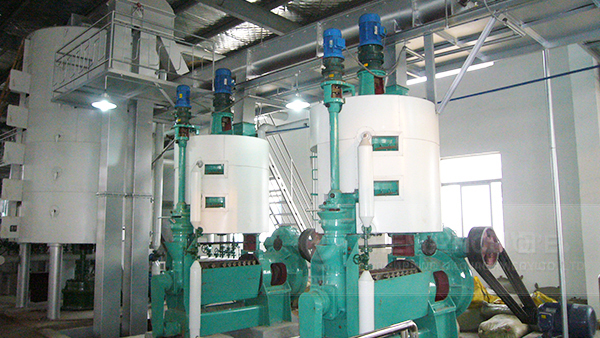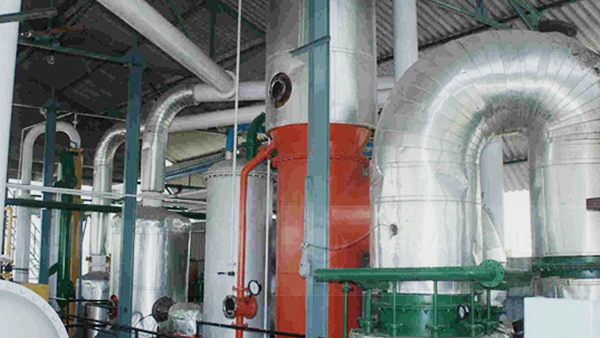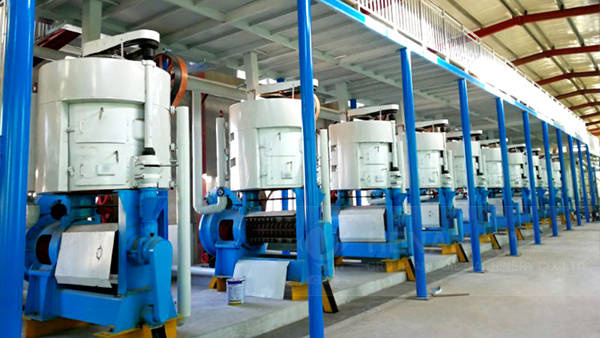Palm Kernel Oil Production Line
Section Introduction:
The Oil Extraction for Palm Kernel mainly include 2 methods, Mechanical extaction and Solvent extraction.Mechanical extraction processes are suitable for both small- and large- capacity operations. The three basic steps in these processes are (a) kernel pre-treatment, (b) screw-pressing, and (c) oil clarification.
The Oil Extraction for Palm Kernel mainly include 2 methods, Mechanical extaction and Solvent extraction.
I Mechanical extraction
Mechanical extraction processes are suitable for both small- and large- capacity operations. The three basic steps in these processes are (a) kernel pre-treatment, (b) screw-pressing, and (c) oil clarification.
Diagram 1: Mechanical extraction of palm kernel oil.
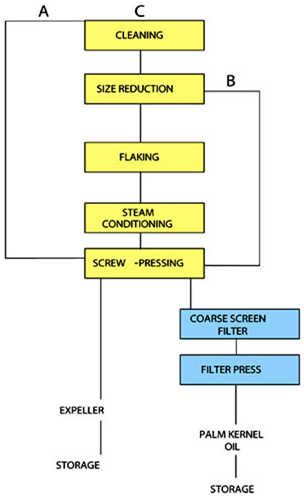
Line (A) is for direct screw-pressing without kernel pre-treatment; Line (B) is for partial kernel pre-treatment followed by screw-pressing; and Line C is for complete pre-treatment followed by screw-pressing.
Kernel pre-treatment
Proper kernel pre-treatment is necessary to efficiently extract the oil from the kernels. The feed kernels must first be cleaned of foreign materials that may cause damage to the screw-presses, increasing maintenance costs and down time, and contamination of products. Magnetic separators commonly are installed to remove metal debris, while vibrating screens are used to sieve sand, stones or other undesirable materials.
A swinging hammer grinder, breaker rolls or a combination of both then breaks the kernels into small fragments. This process increases the surface area of the kernels, thus facilitating flaking. The thickness of kernel cakes is progressively reduced as it travels from the top roller to the bottom. This progressive rolling initiates rupturing of cell walls. The flakes that leave the bottom nip are from 0.25 to 0.4 mm thick.
The kernel flakes are then conveyed to a stack cooker for steam conditioning, the purpose of which is to:
a. adjust the moisture content of the meal to an optimum level;
b. rupture cell walls (initiated by rolling);
c. reduce viscosity of oil;
d. coagulate the protein in the meal to facilitate separation of the oil from protein materials.
The meal flows from the top compartment down to the fifth compartment in series. At each stage a mechanical stirrer agitates the meal. Steam trays heat the cookers, and live steam may be injected into each compartment when necessary. The important variables are temperature, retention time and moisture content. In the palm kernel, the meals are normally cooked to a moisture content of 3 percent at 104-110°C.
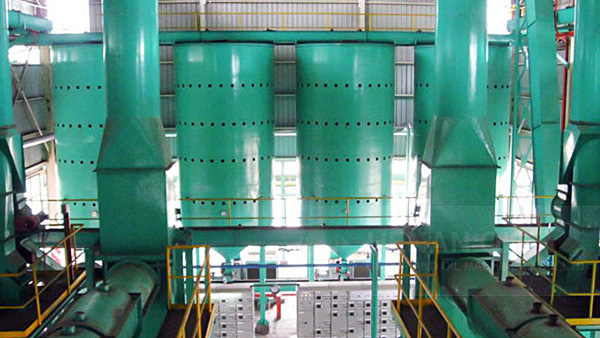
Screw-pressing
The properly cooked meal is then fed to the screw-press, which consists of an interrupted helical thread (worm) which revolves within a stationary perforated cylinder called the cage or barrel. The meal is forced through the barrel by the action of the revolving worms. The volume axially displaced by the worm diminishes from the feeding end to the discharge end, thus compressing the meal as it passes through the barrel.
The expelled oil drains through the perforation of the lining bars of the barrel, while the de-oiled cake is discharged through an annular orifice. In order to prevent extreme temperatures that could damage the oil and cake quality, the worm-shaft is always cooled with circulating water while the barrel is cooled externally by recycling some cooled oil.
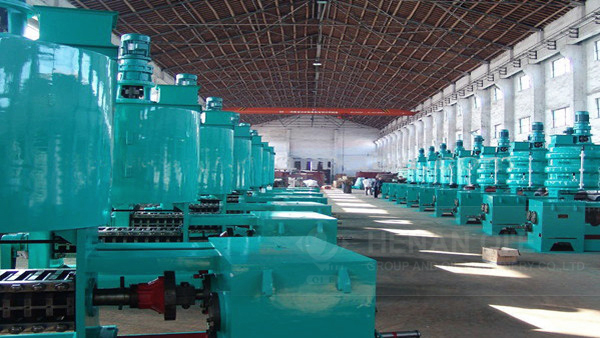
Oil clarification
The expelled oil invariably contains a certain quantity of ‘fines and foots’ that need to be removed. The oil from the presses is drained to a reservoir. It is then either pumped to a decanter or revolving coarse screen to remove a large part of the solid impurities. The oil is then pumped to a filter press to remove the remaining solids and fines in order to produce clear oil prior to storage. The cakes discharged from the presses are conveyed for bagging or bulk storage.
As can be seen from Diagram 1, not all crushers use the same procedure for mechanical extraction of kernel oil. There are three variations: direct screw-pressing, partial pre-treatment, and complete pre-treatment.
Direct screw-pressing
Some mills crush the kernels directly in the presses without any pre-treatment. Double pressing usually is required to ensure efficient oil extraction. The screw-presses used normally are less than 10 tonnes per unit per day.
Partial pre-treatment
The kernels are first broken down to smaller fragments by grinding prior to screw-pressing. In some cases, cooking is also carried out.
Complete pre-treatment
The full pre-treatment processes described earlier are carried out prior to screw-pressing. Plants with larger capacities (50-500 tonnes per day) choose complete pre-treatment and the equipment.
II Solvent extraction
Solvent extraction processes can be divided into three main unit operations: kernel pre-treatment, oil extraction, and solvent recovery from the oil and meal. For the purposes of small-scale operations it is sufficient to mention the solvent extraction process is an alternative for high capacity mills. However the process is not recommended for small enterprises.
Equipments mainly included
Oil extractor, desolventizer, evaporator, stripping tower, condenser,exhaust gas recovery machine.
Section A Kernel Pre-treatment( as showed in Diagram 1)
Cleaning→Size Reduction(Crushing)→Flaking→Steam Conditioning→Pre-pressing→Pre-pressed cake
Section B Oil Extraction (as showed in Diagram 2)
Diagram 2 Solvent Extraction of Palm kernel
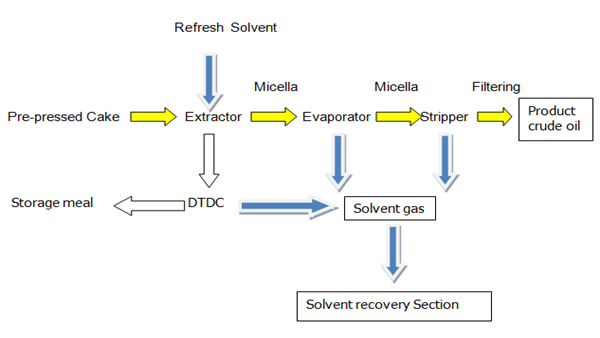
B1. Solvent Extraction
Oilseed flakes or cake are conveyed into extractor, for solvent spraying, steeping and extracting. Then miscella will be pumped to evaporation system and stripping tower to get crude oil from miscella and wet meal will be desolventized at DTDC.
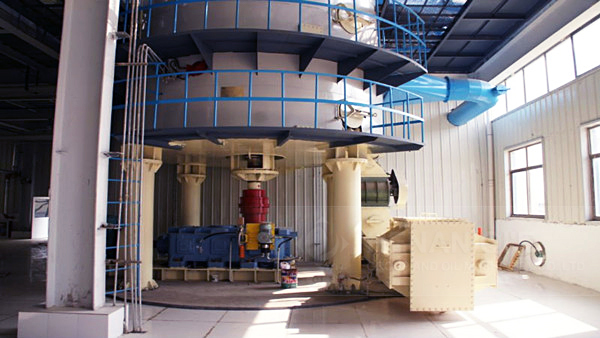
B2. Evaporation System
Miscella will be pumped to evaporation system after removing impurities twice. The evaporation system consists of first evaporator, second evaporator and stripping tower. The solvent evaporated from miscella will be recycled.
B3. D.T.D.C
Wet meal from extractor contains a certain amount of solvent will be conveyed to D.T.D.C for desolventizing, toasting, drying and cooling
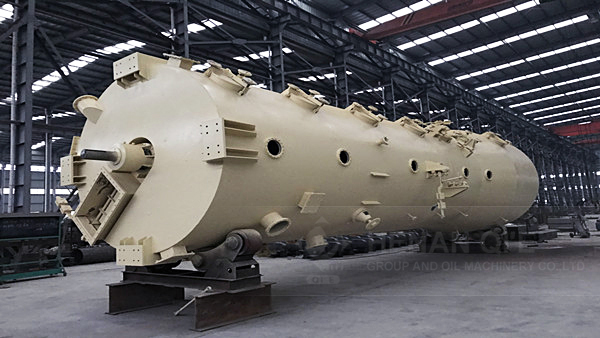
Section C Solvent recovery (as showed in Diagram 3)
Diagram 3 Solvent recovery
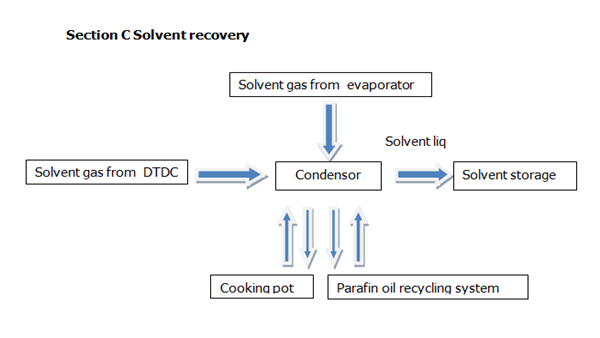
The solvent vapor evaporated from each section is recycled to solvent tank through the condenser. The uncondensed solvent vapor enters into the tail gas condenser and most of uncondensed solvent vapor will be condensed. A small amount of solvent vapor enters into the paraffin oil recycling system in which solvent vapor is recollected by paraffin oil. Other incondensable gas is exhausted through the exhaust fan.
III Advantages of solvent extraction
a. Negative extraction, high oil yield, low residual oil rate in meal, good quality meal
b. Big volume extractor design, high process capacity, high benefit and low cost.
c. The solvent extracting system can be designed according to different oilseeds and capacity, which is easy and reliable.
d. Special solvent vapor recycling system, keep clean production environment and high efficiency.
f. Sufficient energy saving design, energy reusing and low energy consumption.




